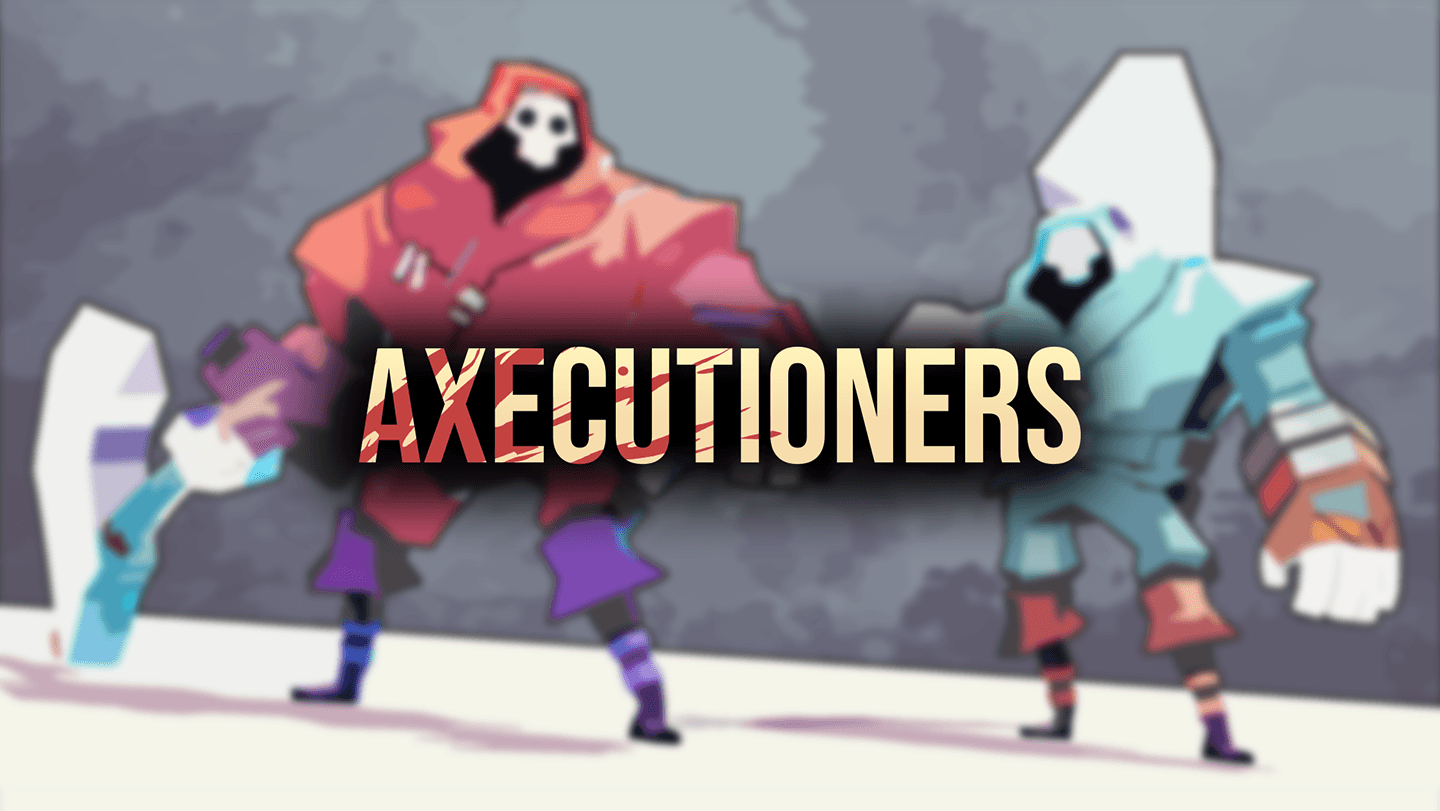My Contributions to the Project
A brief bulleted list of things I worked on or created during my time on this project. Feel free to click the plus signs if you’re interested in more details about certain entries.
Audio Management Script
The Problem: Keeping track of dozens of unique sound effects could quickly become confusing, and carried the risk of disorganized code and loss of assets. Neither Unity’s default audio systems nor the default FMOD scripts were powerful enough for the needs of our project. Our teem needed customized tools for easy implementation of sound effects, and with callable public functions so that any of the scene’s objects have the functionality to play sounds through their respective scripts. Ideally, this would give significantly more freedom to how audio is stored in our scene, and would streamline the process of adding additional sounds over the course of the project.
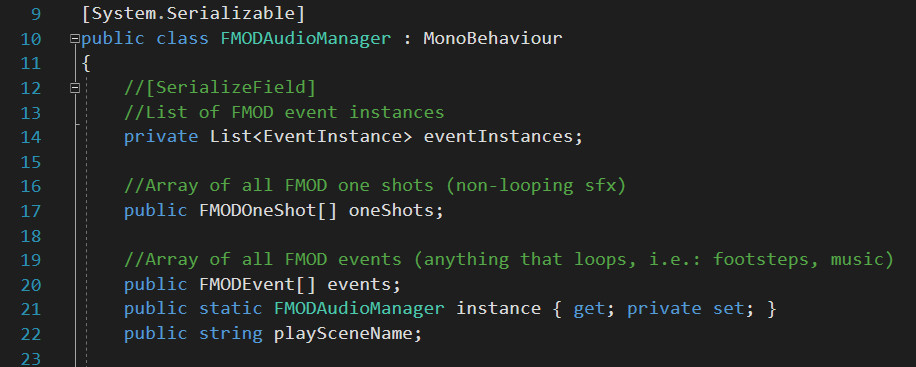
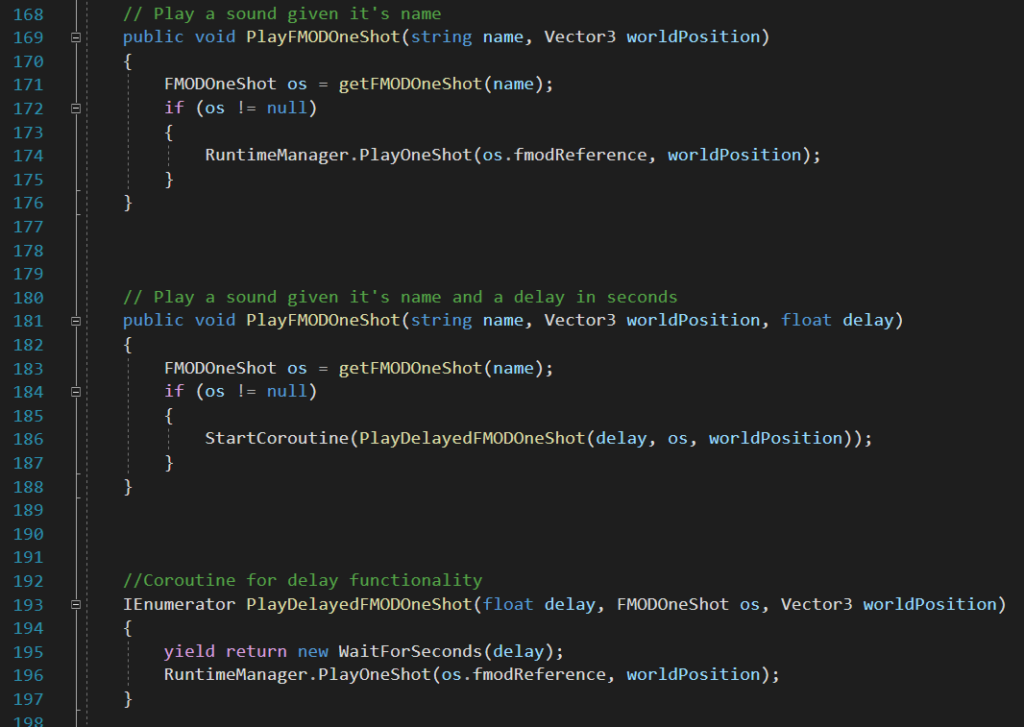
What I Did: Used C# Scripting to create an Audio Manager prefab that can simply be dragged and dropped into any Unity scene for ease of use by the rest of the team. Features of the Audio Manager Script included the sorting of sounds into one-shots and loopable events, callable functions for playing sounds with a delay for optimal sync with animations, and an easy to use editor interface so changes could be made to the game’s sounds without the need to edit code. With the audio manager prefab finished, our level designers, systems designers, and sound designer had easy access to the game’s audio functionality, and the process of adding and tweaking sounds became a quick and intuitive process. It ensured that management of audio assets was seldom an issue for the Axecutioners team.



Cheering Crowd with Beat Detection
The Problem: Our game’s soundtrack made heavy use of crowd vocals, and watching the in-game crowd jump and cheer in a way that doesn’t at all match the music created a disconnect between the game’s audio and visuals. Our game needed a way to sync the animations of the crowd with the music, as part of the decision to add crowd vocals to the game’s soundtrack was due to the immersive experience it would give to the player when the crowd cheered for them to the beat of the music.
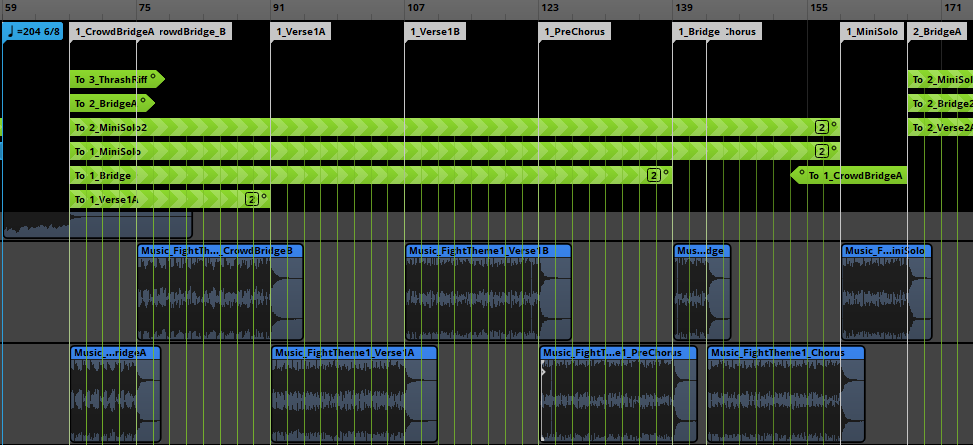
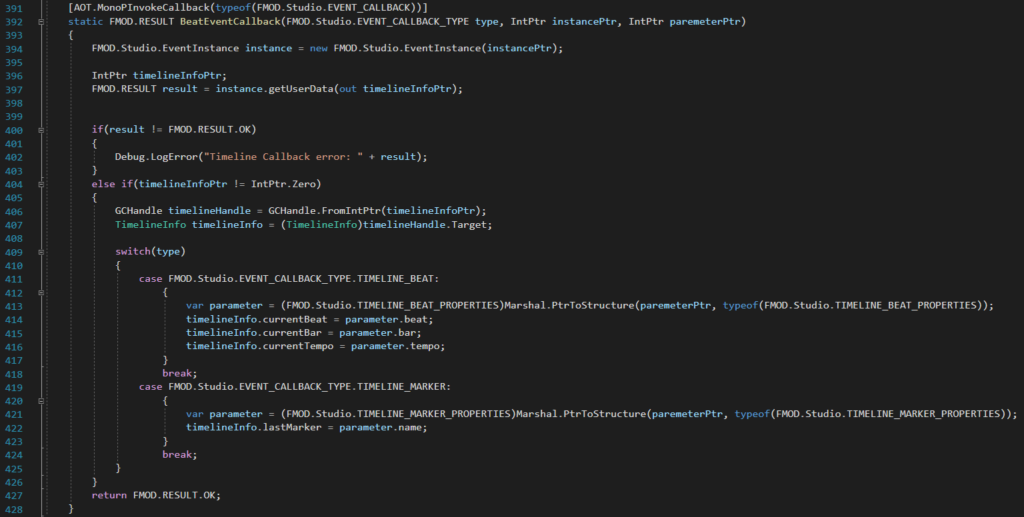
What I Did: I used FMOD’s time marker feature to label different sections of the game’s music. Using callbacks, I was able to obtain data on the fly from the music FMOD Event, such as the current beat and bar with respect to the song’s time signature as integers, and the text of the active time marker as a string. In the FMOD Editor, each time marker contained an integer variable based on the current section of the song, as well as a unique descriptive name such as “chorus 2” or “verse 1”. Using the section names, I checked if the current section of the song contained crowd vocals, and if it did, used the current beat and bar information to set the animation state of the crowd members. In combination with the game’s dynamic music, the crowd’s synchronicity with the soundtrack’s vocals created an effective and immersive audio environment that enhanced the player experience.
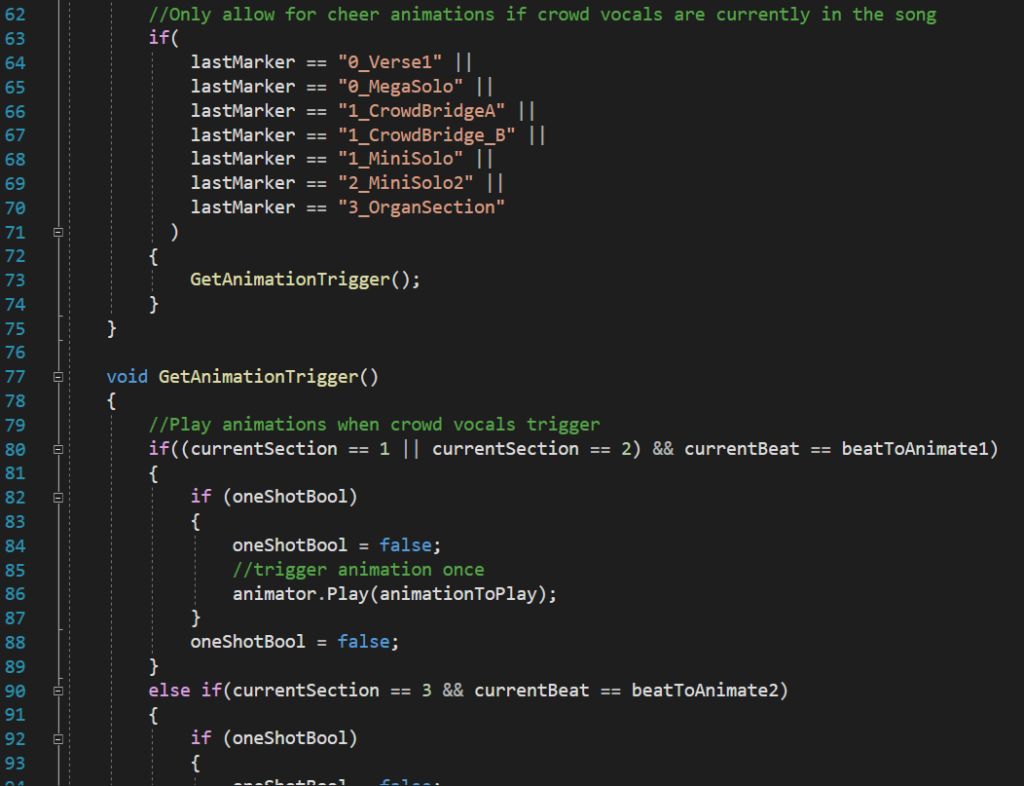
FMOD Best Practices
The Problem: Without proper organization, naming conventions, and file management, finding the correct sound files to call in our scripts will slowly become more and more complex until finding the correct files becomes nigh on impossible. Additionally, the creation of our own audio assets carries the risk of volume imbalance, and certain sounds being significantly louder or quieter than they should be would negatively impact the player experience and flow of gameplay. Our team needed a system to keep track of all of the game’s different audio assets, and a system to ensure that the audio assets were all balanced to similar loudness levels, ensuring far less difficulties in the mixing process.
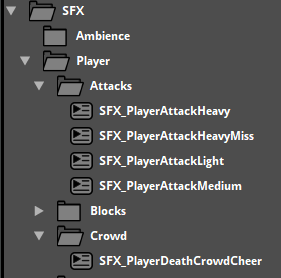
What I Did: I created a system of naming conventions for the game’s audio assets, as well as folder, channel, and bank structures in the FMOD engine. This allowed the rest of the team to easily search for whatever audio assets they may have needed at any given time. For example, in the audio manager script’s drop down menu, they could search for “SFX_Player” to list all sound effects pertaining to the player, or taking it one step further, they could search for “SFX_PlayerAttack” for a list of every sound asset pertaining to the player’s attacks. Additionally, after being given the raw sound files by our sound designer, I made sure each of these sound effects was properly balanced by utilizing FMOD’s built in loudness meter. Each of the game’s sounds was balanced to -23 LUFS to give plenty of headroom for the mixing process. I then separated the output channels of individual sound effects into mixer tracks based on their folder category. This in turn made the mixing process as easy as adjusting the faders of each category. With a clean and standardized FMOD project, and systems in place to ensure it never became disorganized, I was able to ensure that the entire pipeline of audio production was quick and intuitive from start to finish.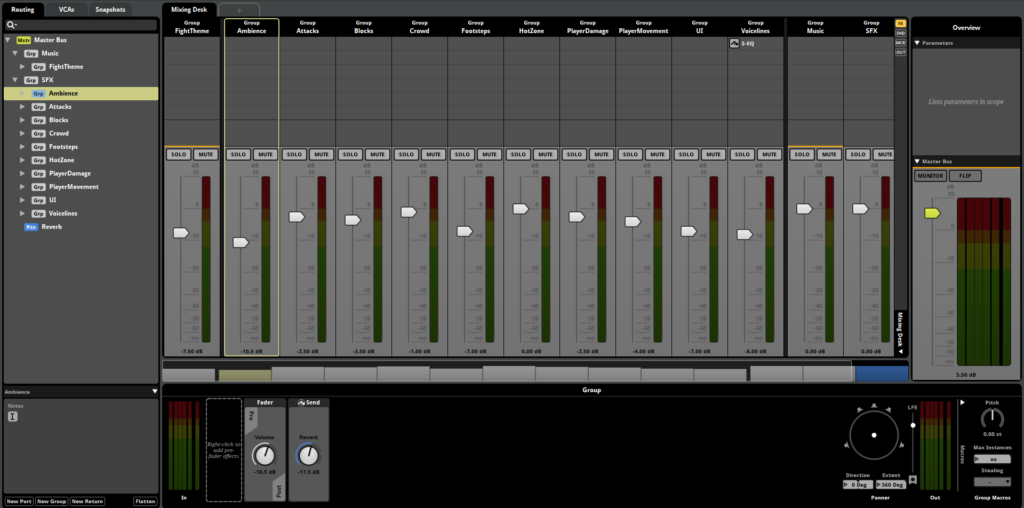
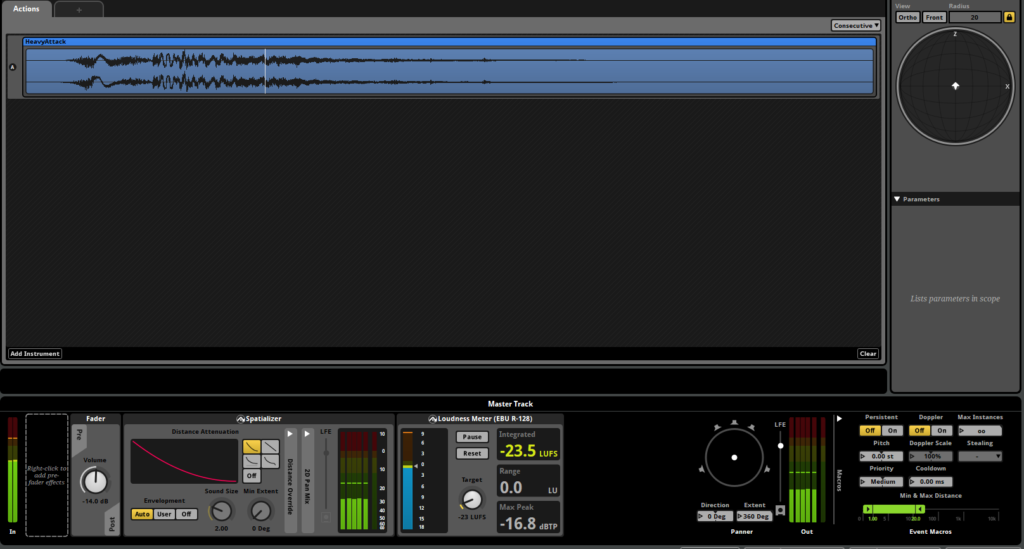
Rockin' Beats to Relax and Fight Each Other to
The Problem: Axecutioners needed a soundtrack that fit the game’s setting and tone, ideally one that served to invigorate players as they battled it out with their opponents.
What I Did: To start, I had a brainstorming session with our team and with the other audio designers. Together we were able to decide on a general direction for the game’s music, that being a sort of slow heavy metal with some medieval and classical elements. I then compiled a large list of songs from artists I liked that were similar to our base concept, to gauge the direction the rest of our team wanted to go with the game’s music. Out of around 40 tracks, the 5 that fit the most were selected, and these served as my musical inspiration for the rest of the project. After studying the selected songs, taking notes of things like drum patterns and harmonic structure, I created a few quick demo tracks, and had the team pick the one they liked the most. The selected demo track: one that made use of electric guitar, organs, and crowd vocals, was then extended into the full 8 minute long piece of dynamic music that served as the game’s soundtrack. Axecutioners received many compliments on its music and audio direction, and while every single one of our audio designers did a stellar job, I’d like to think the music was part of the reason its audio was received so well. Take a listen and judge for yourself!
Dynamic Music to Reflect the Battle
The Problem: Despite the soundtrack fitting the game’s setting, the gameplay state in a heated fighting game match is constantly changing, and if nothing is done, the stagnance of the game’s music could lead to ludonarrative dissonance. Our team needed a way for the game’s music to accurately reflect the game state, the player’s actions, and the intensity of the fight.
What I Did: To allow for ease of implementation with audio middleware, I separated the game’s soundtrack into small individual 4-8 bar sections, each section being given a different marker to allow FMOD to easily jump between sections on the fly. Additionally, I composed many different short transitions so that switching between sections was always completely seamless and unnoticeable. To determine which sections of the game’s music should play when, I devised a flowchart.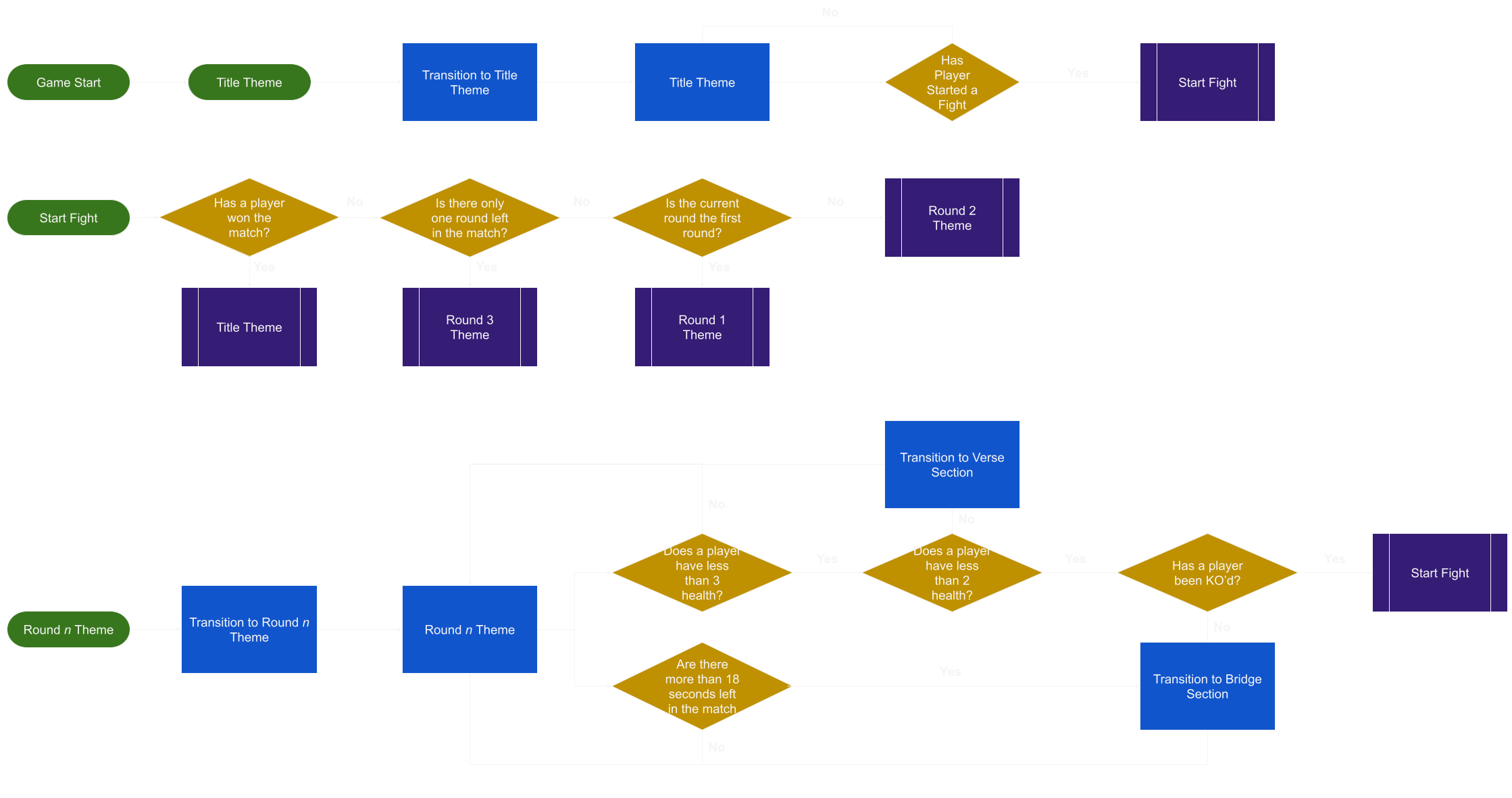
The flowchart above is a simplified version of the actual flowchart I made, as in reality the game’s dynamic music was quite a bit more complex, with additions such as beat-aligned SFX, time signature changes, and an “intensity” variable, though this should give a good general idea of how the game’s music worked. Each of the transitions are set to happen on set beat intervals. The final product of this complicated dynamic music system is a single seamless and ever-changing piece of music that perfectly reflected the game state and actions of each player.
Putting Voices to Faces
The Problem: At the start of every match, we implemented a countdown timer that appeared as the music swelled at the start of a match, but something still felt like it was missing from the experience that prevented it from feeling truly satisfying. Some form of voiceover recording was needed. Additionally, as we approached our deadline, the team realized that we had a fully written script for the game’s trailer, but lacked voiceover dialogue to read it. A voice recording session would allow us to kill two birds with one stone.
What I Did: As the recording booth was fully booked, I fashioned together a makeshift studio recording setup with my personal audio gear. Over the course of around an hour, I recorded the announcer voice lines and trailer voiceover myself, doing a couple takes of each line to ease the editing process if anything went wrong. Using my knowledge of mixing, I was able to remove the ambient room noise by recording a few seconds of silence to create a noise profile that I could plug into a noise removal tool. As the voice lines were for the Necromancer, I used downward formant pitch shifting to give my voice the demonic quality I was going for, and after some finishing touches (sibilance removal, compression, EQ, and loudness matching, and mastering) I was able to effortlessly implement the countdown voice lines through our audio manager. Soon after, I edited together our trailer video using the newly recorded voiceover. The trailer is currently viewable on the game’s Steam page, and I’m fairly proud of what I was able to accomplish with a relatively minimal recording setup. Feel free to check out some of the voiceover work I did in the game’s trailer!
Released
May 2023
Platform
Steam
Team Size
13
Blog posts featuring Axecutioners
One of my favorite things about being a game developer and an audio designer is getting to share the things I learn with whoever I can. Check out some recent poste from my personal blog!
Coming Soon!
The Axecutioners Team

Brendan Smith
Lead Producer

Parker McDermott
Scrum Master

Griffin Quayle
Lead Designer

Benji Linden
Technical Designer/Product Owner

Talyn Xystus
Lead Sound Designer

Michael St. Louis
Audio Designer/Audio Programmer

Michael O’Donnell
Sound Designer

Joe Packard
Lead Artist/Environment Artist

Ben Wolcott-Schickler
Lead Animator

Michael Aucella
Character Artist/Animator

Aaron Lurie
Lead Programmer/AI Programmer

Michael Kashian
Gameplay Programmer/Repo Manager

Neal Wojtowicz
Lead Programmer/AI Programmer





